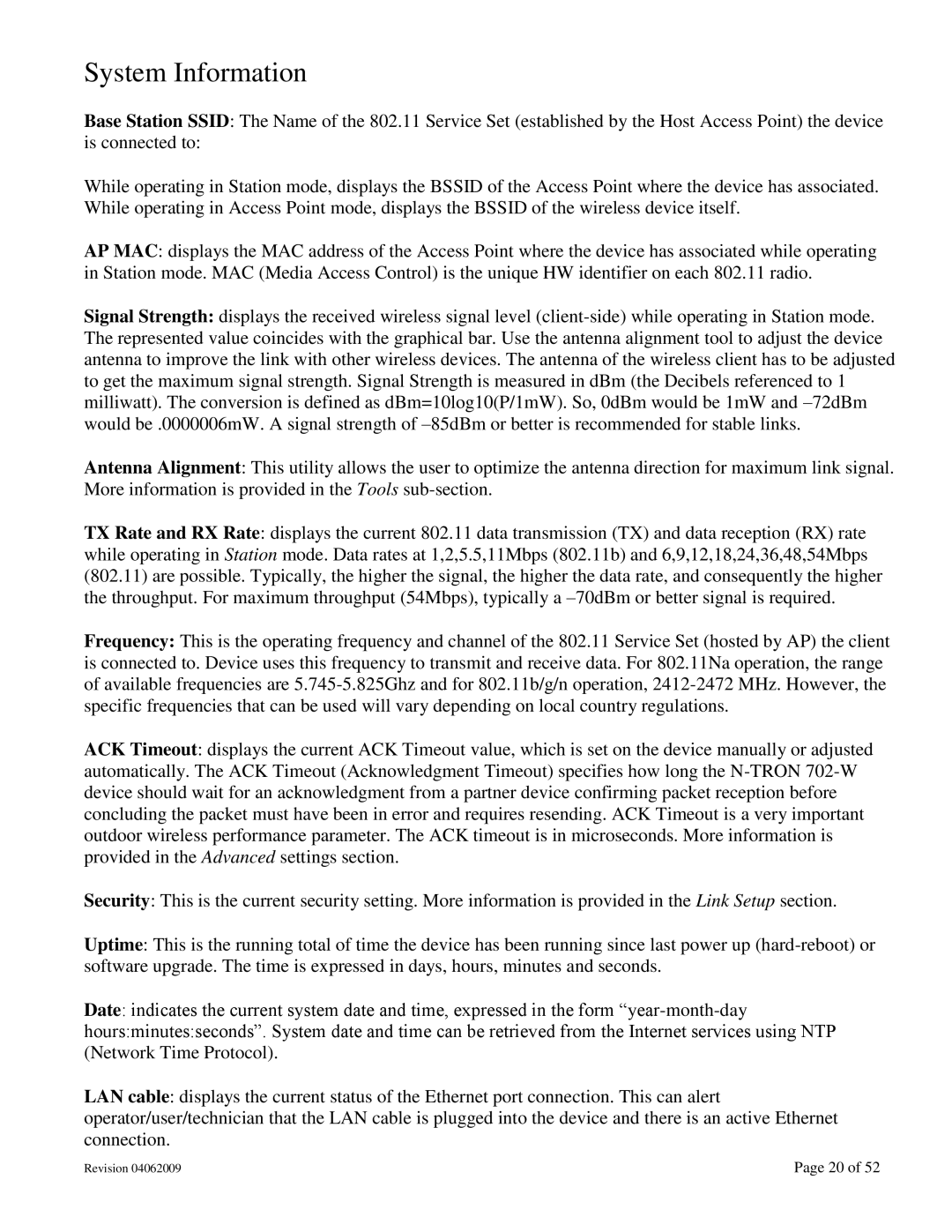System Information
Base Station SSID: The Name of the 802.11 Service Set (established by the Host Access Point) the device is connected to:
While operating in Station mode, displays the BSSID of the Access Point where the device has associated. While operating in Access Point mode, displays the BSSID of the wireless device itself.
AP MAC: displays the MAC address of the Access Point where the device has associated while operating in Station mode. MAC (Media Access Control) is the unique HW identifier on each 802.11 radio.
Signal Strength: displays the received wireless signal level
Antenna Alignment: This utility allows the user to optimize the antenna direction for maximum link signal. More information is provided in the Tools
TX Rate and RX Rate: displays the current 802.11 data transmission (TX) and data reception (RX) rate while operating in Station mode. Data rates at 1,2,5.5,11Mbps (802.11b) and 6,9,12,18,24,36,48,54Mbps (802.11) are possible. Typically, the higher the signal, the higher the data rate, and consequently the higher the throughput. For maximum throughput (54Mbps), typically a
Frequency: This is the operating frequency and channel of the 802.11 Service Set (hosted by AP) the client is connected to. Device uses this frequency to transmit and receive data. For 802.11Na operation, the range of available frequencies are
ACK Timeout: displays the current ACK Timeout value, which is set on the device manually or adjusted automatically. The ACK Timeout (Acknowledgment Timeout) specifies how long the
Security: This is the current security setting. More information is provided in the Link Setup section.
Uptime: This is the running total of time the device has been running since last power up
Date: indicates the current system date and time, expressed in the form
LAN cable: displays the current status of the Ethernet port connection. This can alert operator/user/technician that the LAN cable is plugged into the device and there is an active Ethernet connection.
Revision 04062009 | Page 20 of 52 |
